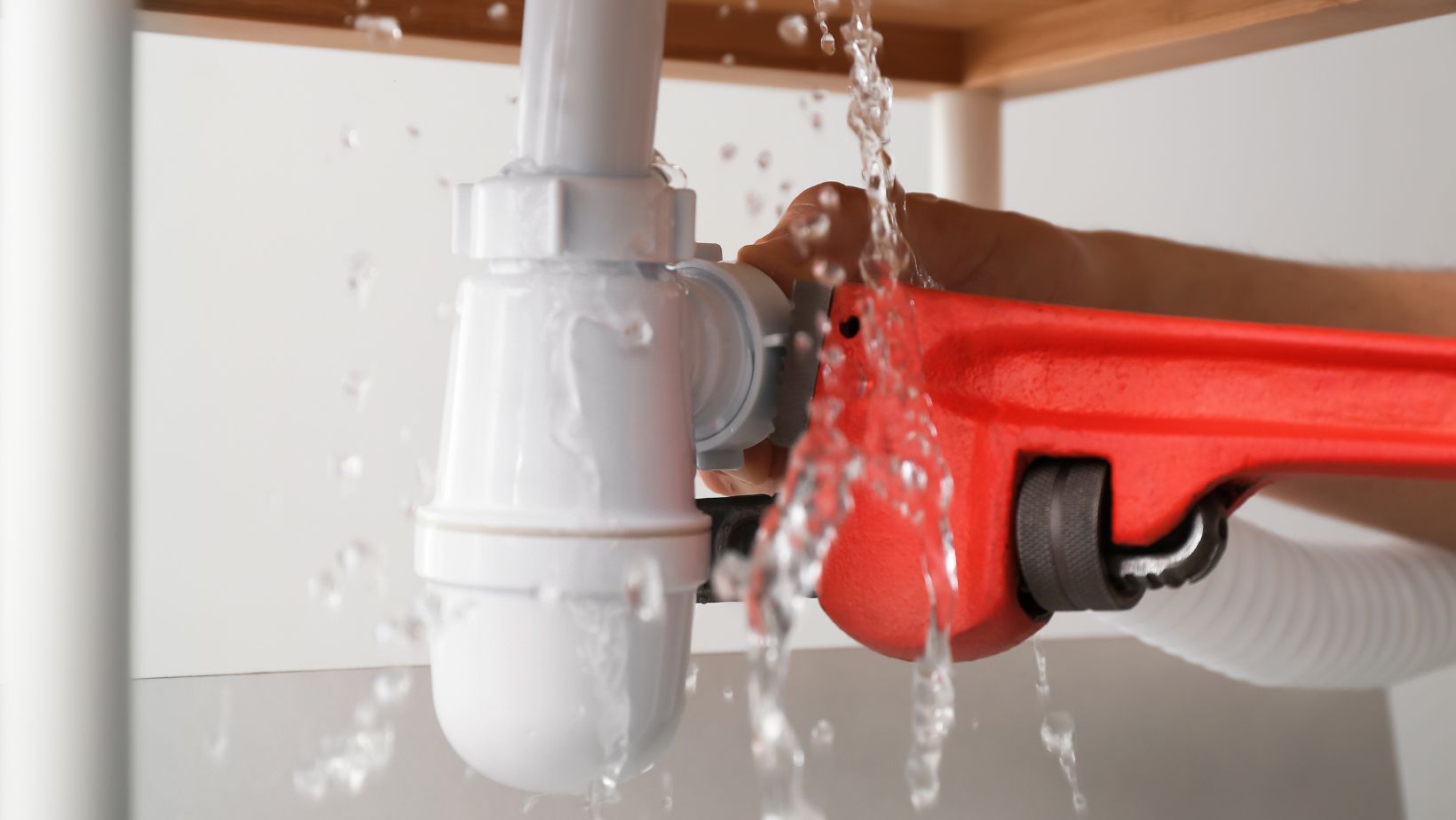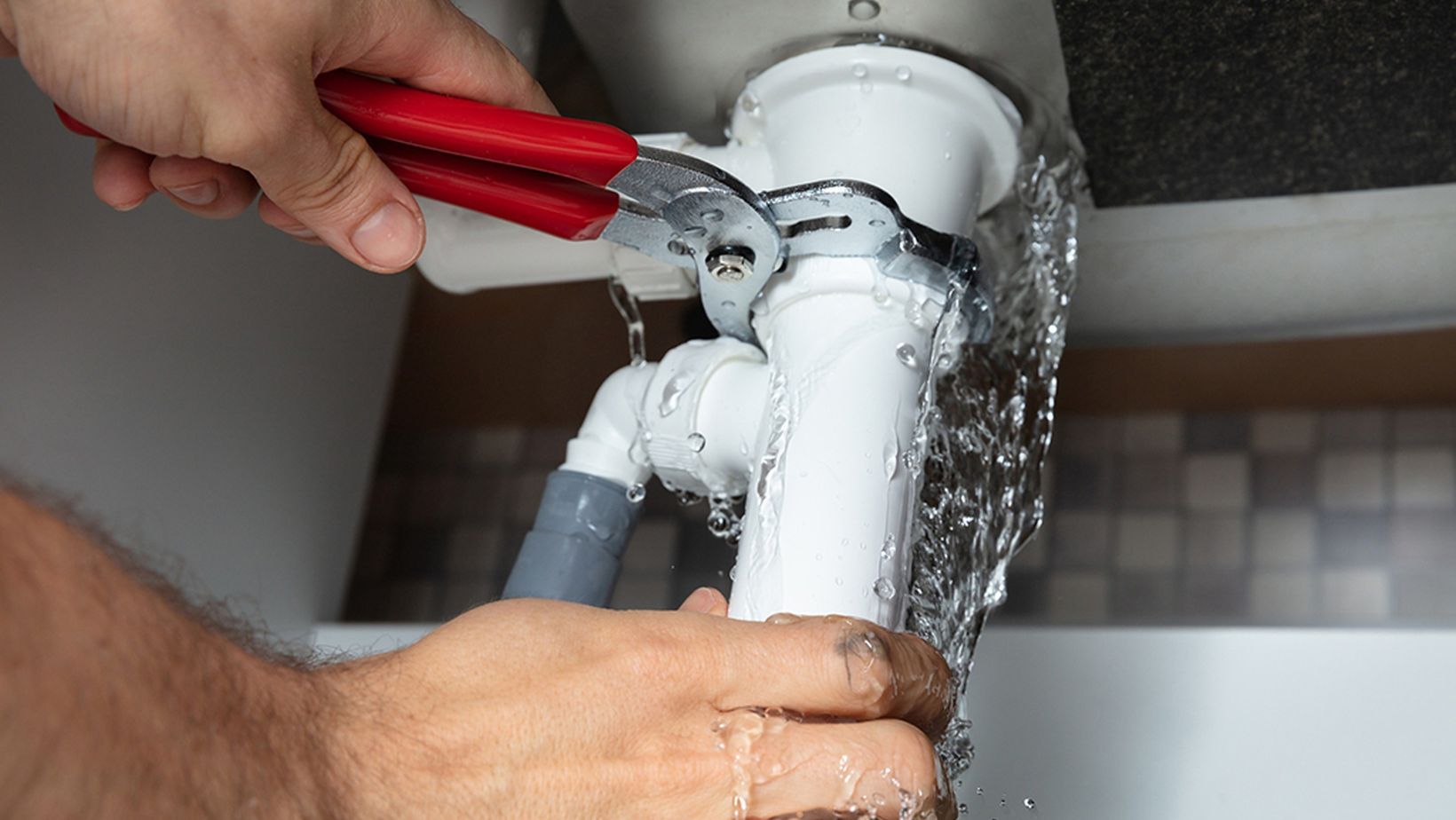
That persistent drip-drip-drip from the kitchen faucet, the shower drain that takes ages to empty, or the sudden blast of cold water mid-shampoo – common plumbing annoyances can disrupt daily life and cause unnecessary stress. While some issues are minor inconveniences, others can signal more significant problems lurking within your home’s pipes.
Fortunately, with a little know-how, you can overcome some of these challenges yourself, saving time and money. This guide offers practical tips for resolving frequent plumbing problems. It helps you recognize when it’s time to put down the wrench and call in a professional.
Tackling Dripping Faucets
A dripping faucet is not just annoying; it’s a literal drain on your resources. Recognizing leaks early is crucial; the EPA estimates that about 10% of homes have leaks, wasting 90 gallons or more daily. One faucet dripping one drop per second can waste over 3,000 gallons of water annually, adding significantly to your water bill and wasting a precious resource. This common issue is usually caused by a worn-out internal component, typically a rubber washer or a cartridge, depending on the faucet type. Over time, the constant friction and water pressure wear down these parts, preventing a complete seal.
Thankfully, fixing a dripping faucet is often a manageable DIY task for homeowners. You’ll typically need basic tools like an adjustable wrench, screwdriver, replacement washers, or a new cartridge specific to your faucet model. To avoid unintended waterworks, turn off the water supply under the sink before starting any work. Many find success with DIY repairs. However, if the dripping continues after replacing the part, it may be time to call a plumber. This is especially true if you’re unsure about the right replacement or working with an old, corroded faucet. Getting help can prevent bigger problems.
Dealing with Slow Drains
A sink or shower drain that empties slowly is a frequent frustration, often developing gradually until it becomes a noticeable problem. The usual culprits are buildups of hair, soap scum, grease, and other debris that cling to the inside of the pipes, narrowing the passage for water. Grease buildup, especially after holiday cooking, is a significant factor in winter clogs. Several DIY methods can be effective for minor clogs. You can use a plunger to forcefully dislodge blockages or pour boiling water to dissolve soap and grease. You can also pour baking soda and vinegar, followed by hot water, to create a fizzing action that breaks down grime. Hair clogs can be tougher, but a drain snake or auger can physically pull them out.

You can avoid many issues by being mindful of what goes down your drains; allowing drains to remain slow can lead to health risks and more expensive repairs down the line. If more than one drain is slow, you may have a bigger problem. If clogs keep coming back even after you clear them, that’s another sign. You might also suspect a deeper blockage in your main sewer line. In any of these cases, it’s time to call a professional to find and fix the real issue.
Solving Fluctuating Shower Temperatures
Few things are more jarring than unexpected temperature swings during a shower, shifting from comfortable warmth to scalding hot or icy cold. Several factors can cause this frustrating inconsistency. Often, it’s due to simultaneous water use elsewhere in the house, like flushing a toilet or running the washing machine, which affects water pressure. Issues with the water heater, such as sediment buildup or a malfunctioning thermostat, can also be responsible.
Another common cause is a faulty pressure-balancing valve or thermostatic mixing valve within the shower fixture. These valves are designed to prevent these fluctuations but can wear out over time. As a first step, check your water heater’s thermostat settings and try to limit running major appliances while showering. Investing in water-saving fixtures like low-flow shower heads can sometimes help manage demand. If your water temperature keeps changing for no clear reason, it could be a sign of trouble. The problem might be with the shower valve or the water heater. Calling a professional plumber to check and fix it is a good idea. Unexplained spikes in your water bill could also signal hidden leaks contributing to pressure issues.
Recognizing More Serious Plumbing Problems
While drips and slow drains are common, certain symptoms indicate potentially serious plumbing issues requiring immediate attention. Widespread low water pressure throughout the house, not just at one fixture, could signal problems with the main water line or significant leaks. Gurgling sounds from drains or toilets, especially when water is running elsewhere, often suggest venting problems or partial blockages in the sewer line. Foul sewage odors emanating from drains or in your yard are a clear red flag, potentially indicating a cracked sewer pipe or septic system issue. Homeowners with septic systems should look for wet spots or unusually lush vegetation near the drain field as signs of trouble, according to A-1 Sewer & Septic Service Inc.
Water stains on ceilings or walls or unusually high water bills flagged by resources like the Consumer Council for Water point towards hidden leaks. Ignoring these signs can lead to significant water damage, mold growth, and costly repairs. Persistent issues like repeated water stoppages underscore the importance of addressing underlying infrastructure problems.
When DIY Isn’t Enough: Calling the Professionals
Knowing your limits is crucial when dealing with plumbing problems. While DIY fixes are suitable for minor issues, attempting complex repairs without proper knowledge or tools can make the situation worse. It can lead to water damage, safety hazards, or violations of plumbing codes. Professional plumbers possess the expertise, specialized equipment (like video inspection cameras for sewer lines), and diagnostic skills to get at the root cause of problems, whether hidden leaks, main line blockages, water heater failures, or septic system malfunctions. The work can be demanding, involving heavy lifting and dealing with unpleasant backups, as highlighted in a firsthand look at the trade by KFDX/KJTL.
Understanding when a seemingly small issue requires expert diagnosis is key, and having access to reliable plumbers in Lenexa, KS, can be critical to resolving the situation correctly and preventing further damage. Professional intervention ensures the job is done right for significant issues, particularly those involving sewer lines or septic systems where repairs can easily run into the thousands.

Companies like A-1 Sewer & Septic Service Inc. specialize in these complex situations, emphasizing the importance of proper maintenance to extend system life. Properly maintained septic tanks can last 25–35 years, significantly longer than neglected ones.
Preventative Maintenance: Your Plumbing’s Best Friend
The most effective way to deal with plumbing problems is to prevent them from happening. Regular preventative maintenance can save you significant hassle and expense down the road. Make it a habit to regularly check under sinks and around toilets for small leaks or signs of moisture. By actively inspecting fixtures, you can participate in initiatives like the EPA’s Fix-a-Leak Week.
Be mindful of what goes down your drains. Avoid pouring grease, coffee grounds, or fibrous materials down sinks, and only flush toilet paper and human waste. You should also know where your home’s main water shut-off valve is in case of a burst pipe or major leak. Upgrades like water-saving fixtures should be considered not only for conservation but also to potentially reduce strain on older systems, a topic discussed in modern home plumbing.
Scheduling periodic professional drain inspections, especially before seasons with extreme temperatures, can catch hidden issues early. Investing in water infrastructure is vital, a point recognized by initiatives like New Jersey’s March4Water Month, highlighting the importance of maintaining these critical systems.
The Bottomline
Dealing with household plumbing issues doesn’t have to be overwhelming. By understanding the common causes behind dripping faucets, slow drains, and fluctuating temperatures, you can confidently tackle minor repairs yourself. Equally important is recognizing the signs of more serious problems and knowing when to call in qualified professionals. Regular checks and preventative maintenance form the best defense against unexpected plumbing emergencies. That ensures your home’s system runs smoothly and efficiently for years to come.
Being proactive and informed empowers you to manage your plumbing effectively, keeping small annoyances from turning into major headaches.




























































